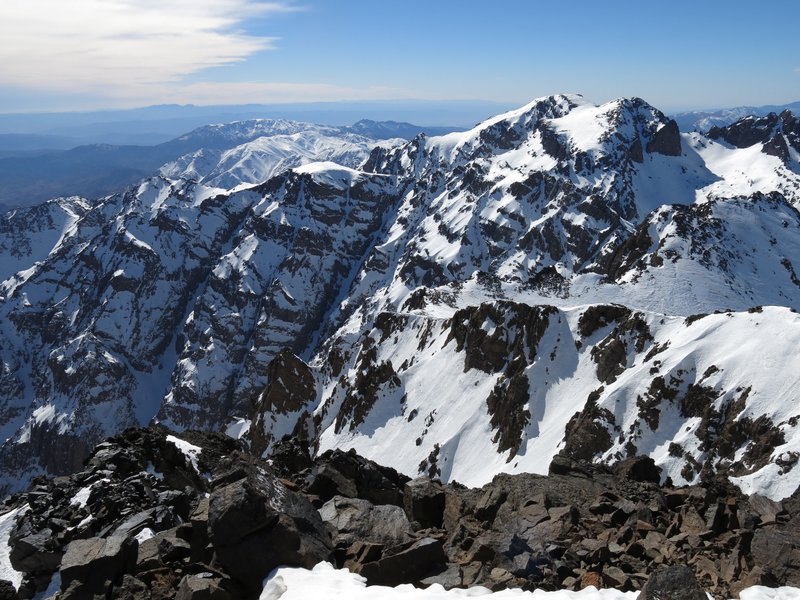
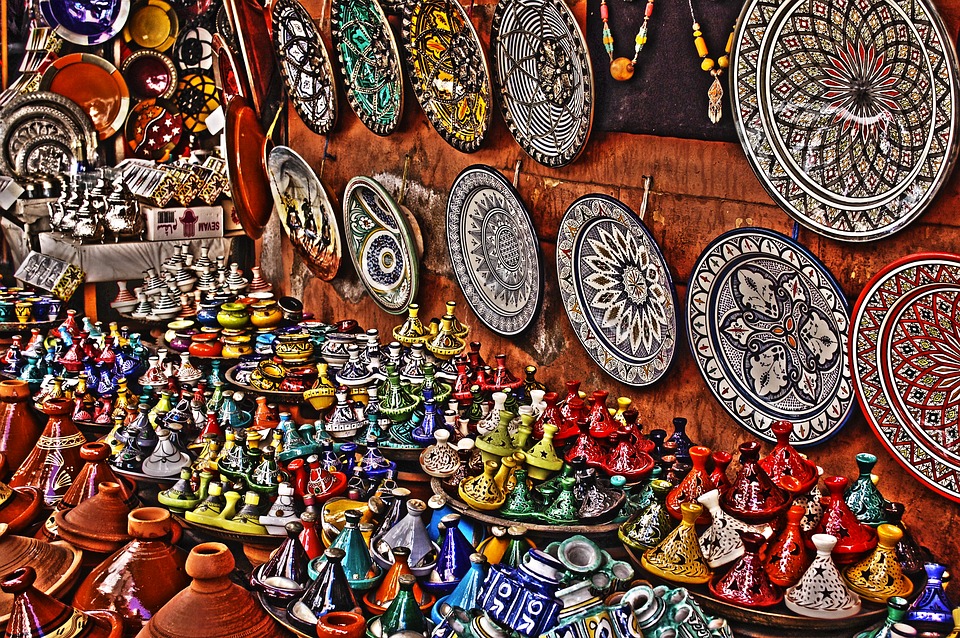
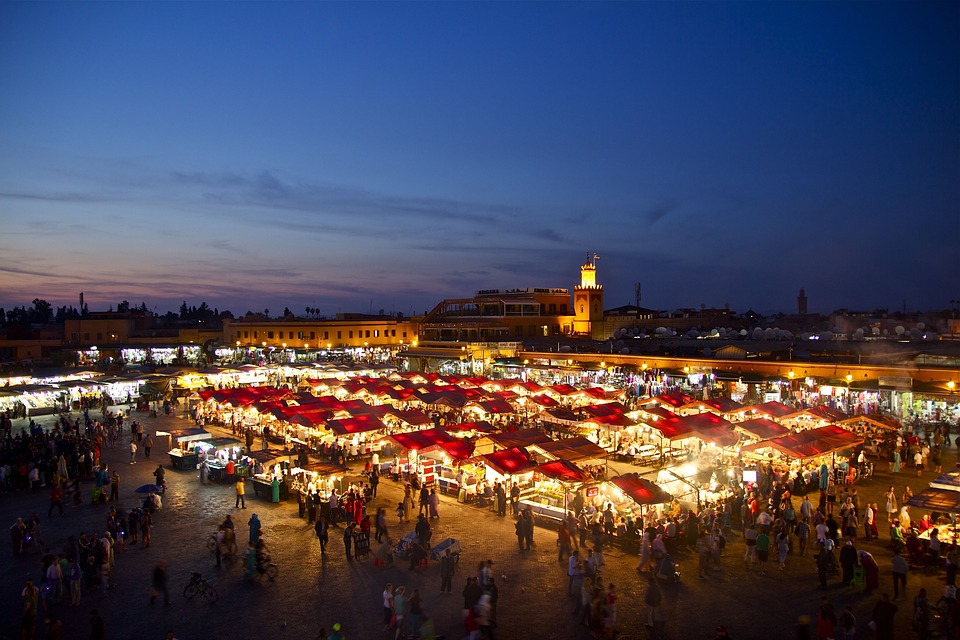
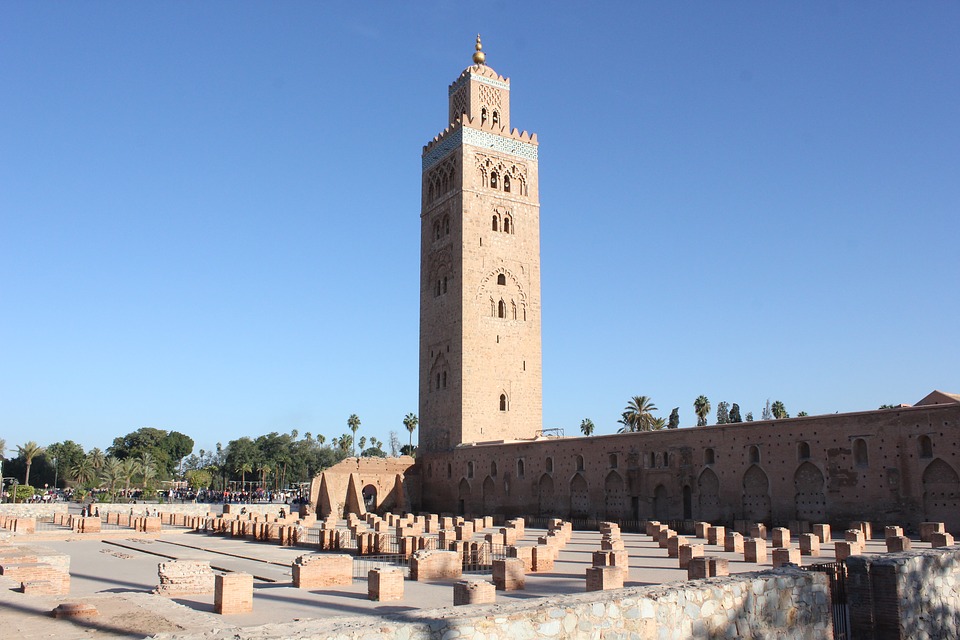
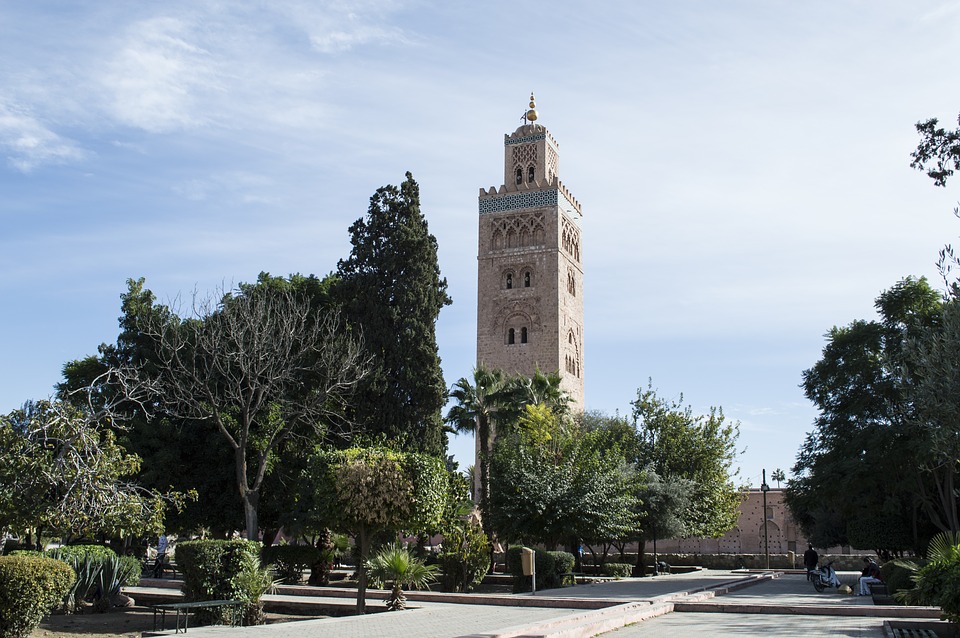
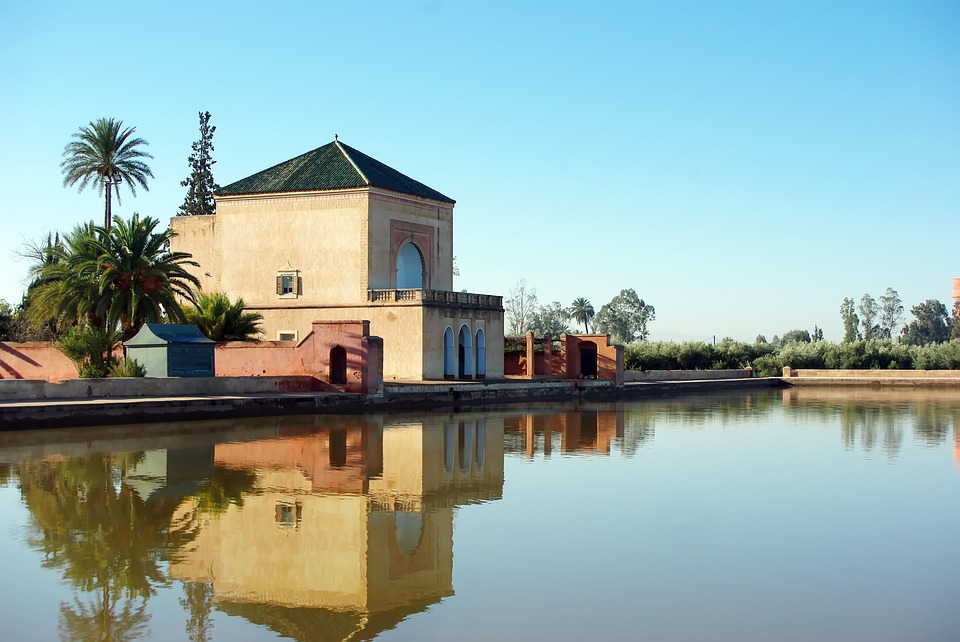
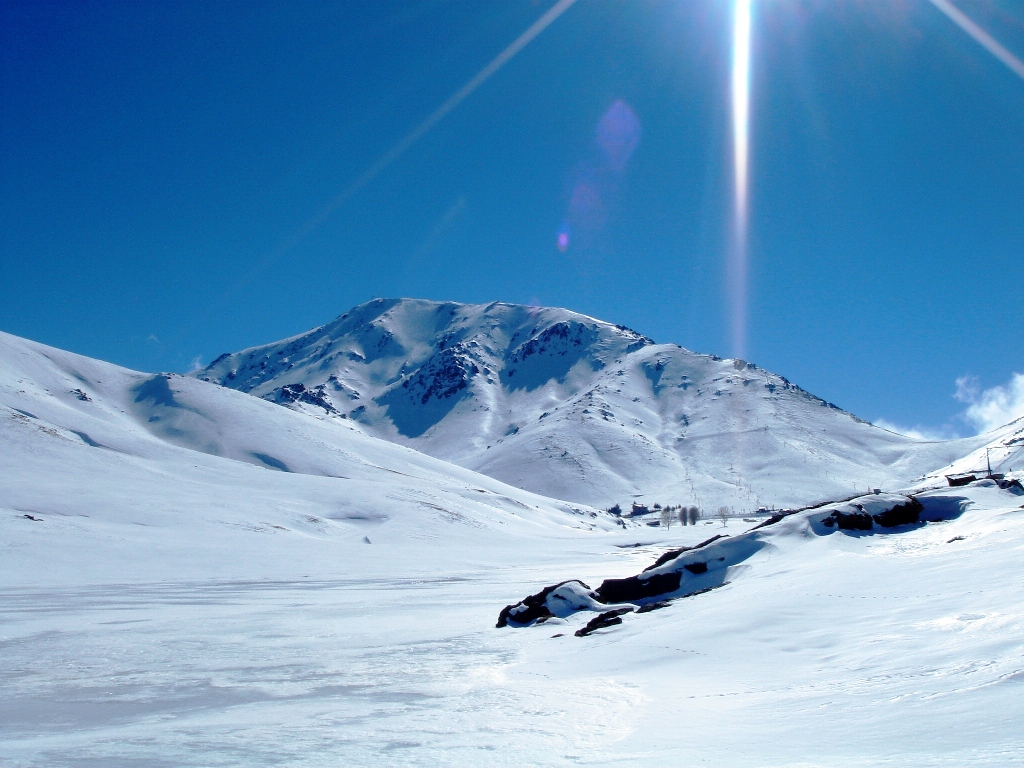
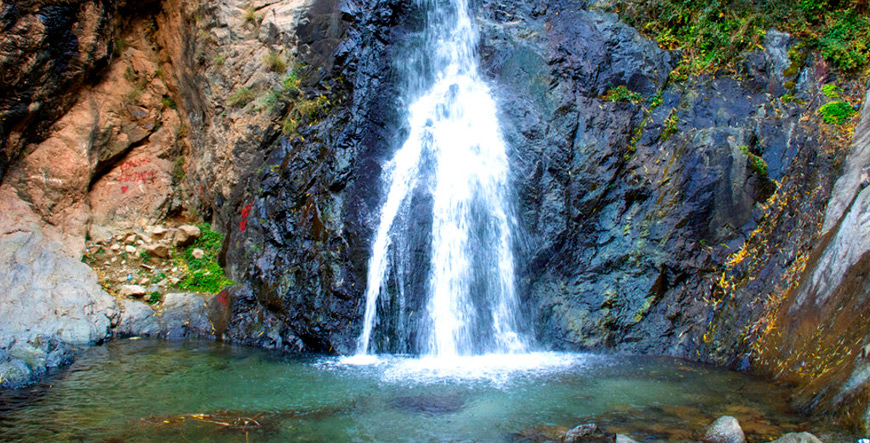
Marrakech is one of the oldest imperial cities of Morocco; founded around 1060-1106) by Youssef Ibn Tachafine king of the empire of the Berber Dynasty Almoravides, it is considered a symbol of Morocco and Arab-Berber-Islamic World. With a stunning view over the snow-capped High Atlas Mountains, surrounded by thousands palms & agriculture fields, this picturesque city is unique and perhaps the most fascinating in Morocco. It is large, full of history, and beautiful.
Known for its red-colored ramparts and a thousand year old palmerie, Marrakech is a city of secluded palaces, museums, mosques and markets. A guided tour of the cities palaces and monuments is a must before winding down in the ancient center (the Medina), the second largest medieval complex in the world which will take you through the trickiest labyrinth of alleyways, souks (markets) and fascinating workshops of the old town. At the end of your tour prepare for the surprise visit to the Jamaa el Fna square, the heartbeat of Marrakech.
Marrakech’s proximity to the High Atlas makes it an ideal base for excursions into the mountains and to the Sahara desert as well.
Among the delights of Marrakech are its plentiful and outstanding restaurants serving local and international delicacies and its outstanding international luxury hotels and its fascinating traditional Riads.
Considered to be one the most popular travel destinations in the world, Marrakech is a great place to start and end your Morocco trip.
City Highlights:
Menara Garden: Built during the 12th century during the reign of Abdelmoumen the Almohad ruler for the purpose of creating an oasis that could be used to both grow crops and to relax and escape the heat of the day. The gardens featured a collection of smaller gardens that surround a massive artificial lake.
El Badii Palace: Was once among the world's most impressive monuments, now a romantic set of sandstone ruins
Dar Mnebhi Museum: A beautiful construction which rose in the 19th century by the work of Mehdi Menebhi. Just over dacade ago, this palace was converted into a museum, which houses benefited the tourists who now only had to go to one place to find architecture and art at the same time.
Dar Si Saïd (Museum of Moroccan Arts): A sumptuous palace housing the very quintessence of Moroccan art such as clothes, objects in beaten copper, arms and Berber jewellery.
Koutoubia Mosque: The largest mosque in Marrakech and is famous especially for its magnificent minaret which rises almost 70 meters and dominates the Square of Jamaa el Fna and is also visible from various parts of the city.
Saadiyine Tombs: A unique example of Saadiyine architecture. Very elaborately decorated rooms harbor tombs of Saadiyine Sultans.
El Bahia Palace: Built in the late 19th century, It consists of the palace itself and a set of beautiful gardens. The idea behind its construction was to create the greatest palace of its time. The construction of The Bahia Palace took approximately 15 years to complete. With its gorgeous gardens, majestic courtyards and patios, the palace consists of beautifully decorated ceilings, mosaic fireplaces and beautifully tiled floors in the inner courtyards.
Majorelle Gardens: The Majorelle gardens, very interesting and delightful gardens planted not only with bougainvilleas, coconut palms and banana trees, but also with bamboo, cactus and palm trees, were laid out in the 1920’s by the French artist Jackes Majorelle
Ben Youssef Madrassa: The old university of Marrakech which was built in the 14th century where students used to live and to study all the medieval sciences such as astronomy, algebra, mathematics, medicine and chemistry as well as theology, literature and philosophy.
The medina (old city) markets: Discover life in the old city of Marrakech. The Souk which is the old and traditional market divided into many different sections. Each part of this Market is specialized in different traditional artwork or handicrafts. First you see the old hostels where the tradesmen used to stay. The woodwork section is as interesting as the dyer’s section where the wool takes color in preparation for carpet weaving. After visiting the craftsmen who paint wood, the visit will lead to the equally fascinating copper, brass and silver carvers. The walk will take you to the blacksmiths market and the leather market before you exit to the final and surprise visit.
Jamaa el Fna: Presently on UNESCO’s World Heritage list and considered as the heartbeat of Marrakech, Jamaa el Fna is a square unlike any other in the world. Originally a traders’ square, it functions as the public face of this city. The Jamaa el Fna comes alive just before dark and swarms with dancers, fortune-tellers, musicians, acrobats, storytellers and snake charmers; an exotic spectacle that is striking and endlessly surprising. A great opportunity to have a glass of tea, relax and enjoy this open air theatre from the terrace of one of several cafes surrounding the place.

Our team is at your service to help you with your booking issues or answer any related questions.